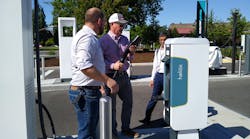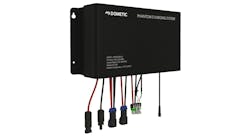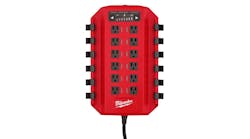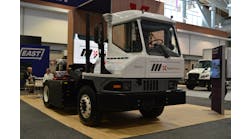It’s not even the middle of May and Mike Roeth, executive director of the North American Council for Freight Efficiency (NACFE), has already appeared at two major fleet shows this month, traversing from his Indiana home to ACT Expo in Long Beach, California, and National Private Truck Council in Orlando, Florida. The super advocate for sustainable transport spoke about how the industry is navigating the “messy middle” between proven diesel-powered trucks and fledgling electric ones.
His summer will be even more jam-packed, as NACFE, in conjunction with RMI, plans its fourth Run On Less Event—a real-world demonstration in which the non-profit closely monitors participating fleets’ truck efficiency metrics, primarily fuel and distance traveled, over a few weeks. NACFE analyzes the data and then writes up and publicly releases a detailed report of the findings.
The first ROL in 2017 revealed that with the right powertrain, aerodynamics, and driver, over-the-road Class 8 tractor-trailers could average above 10 mpg. That was followed by a regional haul demo, and then an exclusively electric vehicle trial. The upcoming Run on Less-Electric Depot, which begins on Sept. 11, might be the most important of all, as it dives headfirst into the messy middle muck and how early adopters are wading through scaling and operational challenges associated with the nascent technology.
Read more: NACFE releases updated guidance on charging infrastructureEach of the eight volunteer fleets has at least 15 EVs, and the list includes major players such as Pepsi, Schneider, Penske, and UPS. Roeth’s now in the messy middle of planning visits to the eight depots and aligning all the relevant stakeholders to pull the event off.
“It’s herding cats,” Roeth said, referring to all the various moving parts that must align to even begin an electric deployment. “There’s the fleet folks, corporate and local site people, truck drivers—we’re trying to get the utilities there, the charging infrastructure, the truck OEMs.”
That’s for each depot. A logistics company may operate several and must go through the same process at each. And because of the push at the state and federal level, and from truck OEMs’ sustainability goals, zero-emission vehicles are likely headed to every fleet in the country. And each fleet will likely need infrastructure at most if not all of their locations.
In California, fleets have 13 years to figure it all out, as the state’s Advanced Clean Fleets regulation is poised to nix internal combustion engine sales by 2036. Can the industry scale to make this possible anytime soon?
Allen Schaeffer, executive director of the Diesel Technology Forum, is skeptical.
“No question, it’s turning out to be a Jenga game—a teetering tower of rules and mandates built in an echo chamber,” he asserted. “It lives on a foundation of uncertain and shaky assumptions of cost, projections of timing, and feasibility. Among other things, it assumes a successful tripling of the power supply in California to fully renewable resources and that the power grid will be both ready and capable of supporting a mass switch to electric power for transportation, even as blackouts and brownouts are annual occurrences today.”
Roeth, who used to work for leading engine maker Cummins and has spent the last decade working with NACFE to increase carriers’ fuel efficiency and reduce emissions, isn’t sure, but is more optimistic.
“We don’t know if it’s too aggressive or not—it sure seems like it is too aggressive,” he pondered. “But on the other hand, we’re pretty early in the game. If you talk to any of the (ROL) fleets, they all say they’re farther along than they thought they would be with the vehicles, even with what’s needed from an infrastructure standpoint.” Driver satisfaction and maintenance simplicity are major selling points for fleets. And though you may see a picture of one of Pepsi’s new Tesla Semis getting serviced on the side of the road, that doesn’t mean electric trucks will be unreliable, Roeth asserted.
“Yeah, they’ve got a downtime issue here and there, but they’re really solvable things, and not a cracked this or cracked that found in the diesel equipment, or the other things that come up that cause big downtime,” he said. “[NACFE] believes the trucks will work. We’ve got range and charging issues, but those can be worked out with faster charging and different operational characteristics of these trucks.”
Because of their simplicity, we see [successful adoption] as execution challenges, not TCO or functional challenges,” Roeth added.
Will the industry be able to execute, though? Roeth is again optimistic, because although electrification is new, the industry knows how to problem-solve and meet regulatory goals.
“We’ve got tons of tools that have been developed from great companies managing our routes, loads, drivers, and freight,” he said. “And we’re going to have to take advantage of connectivity and fleet management tools that have been created over the last years to execute these electric trucks.”
For real progress to be made, and within the given timeline, Roeth concluded fleets and other stakeholders must spend their energy on thinking through solutions, and not how to stall the inevitable.
“We’ve got to do it smartly, rather than throw up too much dust in our fighting over it to keep us from getting it done,” he said. “I worry about too much of our industry debating this rather than getting on with it.”
The debate, though, will likely rage on for years to come. As more fleets adopt and learn how to navigate the complexities, we can only hope they get less messy.
To register for NACFE's Electric Depot Bootcamp and catch up on previous educational session, click HERE.




